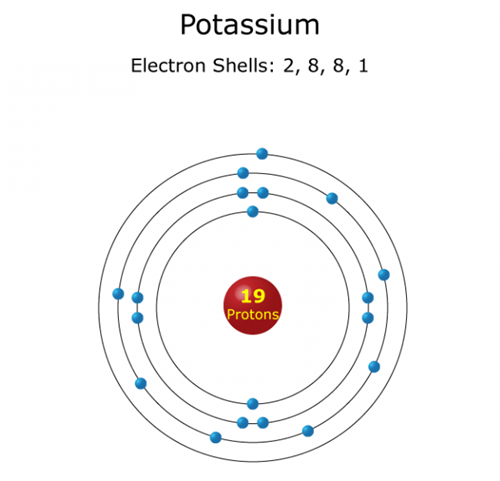The 10 Most Interesting Facts About Potassium
What is Potassium ?
Potassium (K) is an alkali metal, a silvery-grey solid with a luster at room temperature. Potassium has an atomic number of 19 and each potassium atom has 19 protons. a valence of 1 and an electron configuration of [Ar]4s1. It has the lowest melting point of all the elements, 63.5 °C, and a boiling point of 759 °C. It is one of the most common chemical elements in everyday life, and is used in a variety of applications such as in agriculture, medicine, chemicals and building materials.

The 10 Most Interesting Facts About Potassium
1. Potassium gets its name from potash. The K symbol for potassium comes from the Latin name for potash, kalium, which was used by German and Scandinavian chemists in their texts and journals to denote potassium. Potash is formed by soaking wood ash in water.
2. Potassium is the seventh most abundant element in the earth's crust, accounting for about 2.5 per cent of its mass. It is also the eighth most abundant element in the human body, accounting for 0.20 to 0.35 per cent of its body weight.
3. Pure potassium is a light, silver-coloured metal that is soft enough to be cut with a knife. Although this metal looks silver when fresh, it rusts so quickly that it usually takes on a dull grey colour. Pure potassium is usually stored under oil or paraffin, as it oxidises readily in air and reacts in water to form hydrogen, which may be ignited by the heat of the reaction.
4. Potassium is found in many different foods, including fruits, vegetables, dairy products, grains and meat. Potassium also helps maintain blood pressure and fluid balance in the body.
5. Potassium is also an essential nutrient for life. As an electrolyte, it conducts electrical signals in the body and, along with sodium, it is essential for proper muscle contraction.
6. Potassium ions are important for all living cells. Animals use sodium and potassium ions to generate electrical potential. This is essential for many cellular processes and is the basis for conducting nerve impulses and stabilising blood pressure. When there is not enough potassium in the body, a potentially fatal condition known as hypokalaemia can occur. Symptoms of hypokalaemia include muscle cramps and heart arrhythmia. An excess of potassium can lead to hyperkalaemia, which can produce similar symptoms.
7. Potassium is also needed for plant growth. Potassium helps to stimulate plant growth and produce greater yields. In agriculture, increased yields are often accompanied by more nitrogen in the crop. Nitrogen is essential for plant growth, but too much of it can lead to problems such as pollution and loss of crop quality. By managing potassium levels in crops, farmers can ensure their plants get the right amount of this essential nutrient while minimising potential adverse side effects. This element is therefore a nutrient that is easily depleted by crops and must be replenished through fertiliser.
8. Potassium is used as a heat transfer medium. Potassium cobalt nitrite is a yellow pigment known as cobalt yellow or golden yellow pigment.
9. Potassium burns in the flame test with a bright red colour using. When in water, the flame appears mauve in colour.
10. Potassium is used in soap, gunpowder, bleach, radiotracers and glassmaking. Potassium-40 is similar to carbon 14 and is used as a radiometric dating marker.K-40 is used to determine the age of rock formations.



